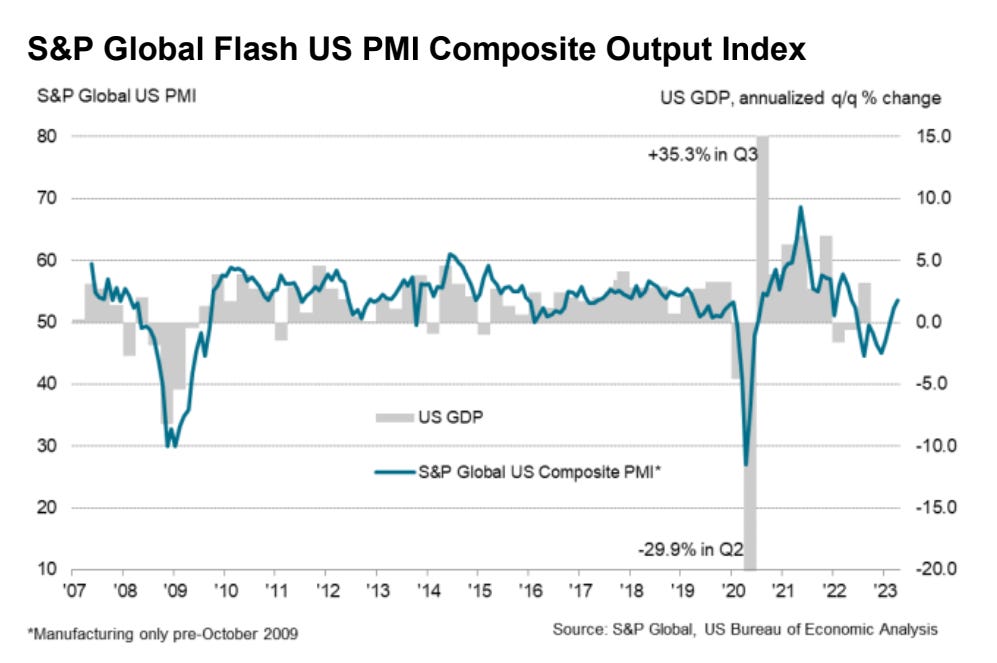Global PMI and Its Significance
Signs of inflationary pressure lurk within the data, but it is overall an encouraging reading for the economy
The Purchasing Managers' Index (PMI) is a leading economic indicator used to gauge the health of an economy. As a leading economic indicator, PMI tends to lead economic growth or contraction as GDP is a lagging economic indicator.
PMI surveys are conducted by organizations like S&P Global, IHS Markit, and others, and are reported monthly.
This educational article aims to explain the significance of global PMI for newer investors and students of economics, while also discussing the latest data in summary.
Key Components of PMI
The PMI is derived from monthly surveys of private sector companies in manufacturing and service industries. The surveys focus on five main components: new orders, output, employment, suppliers' delivery times, and stocks of purchases. A PMI reading above 50 indicates expansion, while a reading below 50 points to contraction.
Significance of Global PMI
Economic health assessment: PMI data provides valuable information about the overall health of an economy. Higher PMI readings signal economic expansion, while lower readings indicate contraction. This information is vital for investors when making investment decisions and for policymakers when devising economic policies.
Sector-specific insights: PMI data is broken down into manufacturing and service sectors, allowing investors and economists to identify sector-specific trends and potential investment opportunities. For example, a strong manufacturing PMI may suggest increasing industrial production and potential growth in related industries.
Early warning signal: PMI data is released monthly, making it a timely indicator of economic trends. It can act as an early warning signal for investors and policymakers, allowing them to adjust their strategies and policies proactively.
Global economic outlook: By analyzing PMI data from different countries, investors and economists can form a comprehensive view of the global economic landscape, identifying potential investment opportunities, and risks across various markets.
Understanding the PMI data from April 2023
The April 2023 PMI data showed a faster rise in business activity in the US, with the S&P Global Flash US PMI Composite Output Index registering 53.5, up from 52.3 in March.
The increase in output was driven by stronger demand conditions, improved supply, and a steeper uptick in new orders across both manufacturing and service sectors.
The data also indicated a pick-up in rates of input cost and output charge inflation, with operating expenses rising at a historically elevated pace. This trend suggests that companies may face challenges in managing cost pressures, which could have implications for their profitability and overall market performance.
It may also demonstrate the challenges for policymakers attempting to manage inflationary pressure if these costs are passed on down the supply chain.
Conclusion
The global PMI is a valuable tool for investors, swing traders, economists, policymakers, and relevant industries to assess the health of an economy, identify sector-specific trends, and anticipate potential changes in economic conditions.
By understanding the nuances of PMI data and its implications for various sectors, newer investors and students of economics can make informed decisions and better comprehend the global economic landscape.

